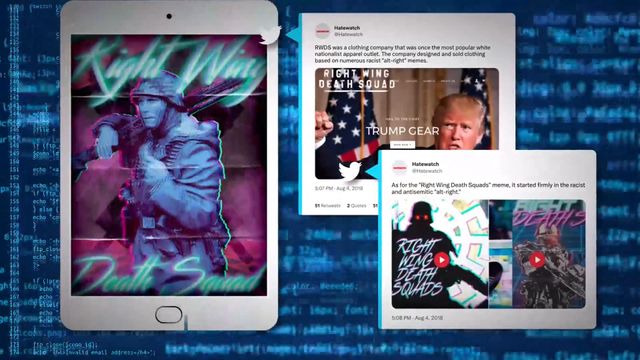Extremist memes spread hate, are hard to track
Online communities are becoming the first platforms where people are expressing their intentions to cause harm. And those ideas often come in the form of provocative jokes, expressed in graphical memes.
The man who shot and killed eight people at a Texas mall last week wore a patch bearing the acronym RWDS. Those initials mean nothing to most people, but for the far right, they are recognized as Right Wing Death Squad, a phrase frequently thrown around in extremist groups,
Experts say that violent extremists use memes to build community around radicalization.
"It's like grassroots organizing, in that it's high touch, and that you feel like you're really involved. But it's also at scale. And that's what a meme can do," said Karen Kornbluh, senior fellow at the German Marshall Fund.
"Researchers call memes 'units of cultural transmission,'" she said. "These memes certainly are and, and they spread like wildfire."
The United States National Counter Terrorism Center recently warned in an intelligence bulletin that memes are full of coded language that makes it harder for social media platforms to flag them as extremist content.
"The intent is to hide these provocative and extremist messaging, you know, under a veil of irony to avert detection," Kornbluh said.
Memes have been a feature of hate-motivated violence for years.
The man sentenced to life in prison for killing 10 people at a Buffalo supermarket last year plastered his gun with racist slogans.
In the winter of 2020, Aaron Swenson posted crude, anti-police memes on Facebook. A few months later, Swenson – a self-described member of the far-right extremist group the Boogaloo Bois – started a Facebook live stream capturing what he said was a mission to hunt and kill a police officer.
Prosecutors used that video, in which he tried to ambush a Texas patrolman, to convict him of attempted murder.
"We can see how these things that appear innocuous as phony sequel jokes as meme cartoons, they can really rapidly and dangerously convert into into real world violence," Kornbluh said.
Both Facebook and Twitter cracked down on extremist users after the Jan. 6, 2021 attack on the U.S. Capitol, but experts say many groups have flocked to more loosely moderated platforms, such as Gab, Telegram and Discord, where an airman is accused of posting classified documents.
"Gaming sites have really come into the fore in public notice as a way for people to be radicalized and and then organized," Kornbluh said.
Law enforcement faces the twin challenges of anonymity and free speech protections. A lot of extremist content is posted under pseudonyms, and the FBI has been reluctant to monitor public social media posts by Americans.
"I don't think we've taken this homegrown extremism seriously enough," Kornbluh says. "We've been very hesitant. Of course we need to protect the First Amendment, respect the First Amendment, but we also have to take extremism seriously."











